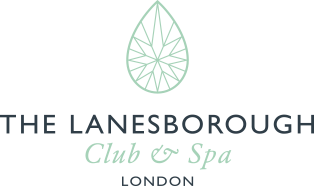
For our latest wellness blog feature, we sat down with the newest member of our wellbeing experts team, reflexologist Ersilia Di Nitto. Read on to learn more about reflexology, what to expect from a session with Ersilia and who can benefit from a reflexology treatment.
What is Reflexology?
Reflexology is an ancient form of treatment founded on the principle that our face, ears, feet and hands are a reflection of our entire body; where each area corresponds to organs, glands and systems. By applying specific techniques and different pressures to these areas, a reflexologist can help the body to restore its own healthy balance. Evidence of different forms of foot, ear and hand therapy being practised in China and Egypt since four thousand years ago have been discovered.
What are the benefits of Reflexology?
The term 'holistic' comes from the Greek word 'holos' meaning ‘whole’. Reflexology aims to treat the individual as a whole, creating a state of harmony in body, mind, spirit and emotions. It is a wonderful way of maintaining your general wellbeing, supporting your natural healing processes and creating a state of balance known as homeostasis. It has the benefit of also being a deeply relaxing therapy, and during periods of relaxation the body takes the opportunity to heal, restore and energise itself. Relaxation can help to relieve muscle tension and chronic pain, reduce anxiety, improve focus and mood, slow the heart rate and breathing rate, improve digestion, lower blood pressure, control blood sugar, boost the immune system, balance the endocrine system, aid circulation, increase the flow of nutrients, oxygen and energy to all parts of the body and remove toxins. Reflexology is a wonderful way of reducing the stresses and tensions that come with busy lifestyles, supporting your natural healing processes and giving you a space to reflect on the mind as well as the body.
Is Reflexology the same as a massage?
In Reflexology, the client is treated holistically, in other words, any treatment and advice takes into account the physical, mental, emotional, social and cultural aspects that define the client. Symptoms have a positive meaning as they tell us that one or more of these aspects are out of balance. For these reasons Reflexology should not be confused with massage. While massage treatments are designed to relieve tension throughout the muscles, Reflexology uses body maps that are on the feet, hands, ears and face, where each area mirrors specific body organs and systems. Reflexology supports you to restore your natural balance.
Who is Reflexology suitable for?
Reflexology is a very popular complementary therapy suitable for all ages, from baby to adult, and whilst it is not a cure, can be especially helpful for long-term and recurring conditions that we might have come to accept over time as part of our daily life. You might find some areas feel sensitive to the touch, but Reflexology is a non-invasive therapy and does not involve hard pressing in the way something like a sport massage might.
How long does Reflexology take to work?
Everyone is different and the response to Reflexology can be immediate or sometimes take longer than one appointment. Regular weekly treatments are best for the body properly beginning the self-healing process. Whether you are looking for support with an existing health condition, want to reduce your day-to-day stress levels or would just like a little “me” time, each Reflexology treatment is specially-tailored and combines a profoundly restorative experience with real health benefits.
Ersilia Di Nitto is a fully qualified and insured Clinical Reflexologist based in central London. Her treatments are holistically designed around each client. No two people are alike, so neither are Ersilia’s sessions, taking into account not only your presenting symptoms but also your lifestyle, mental attitudes, emotions, previous experiences and relationships, as all these factors are always involved in the disease process as much as in the healing process.

